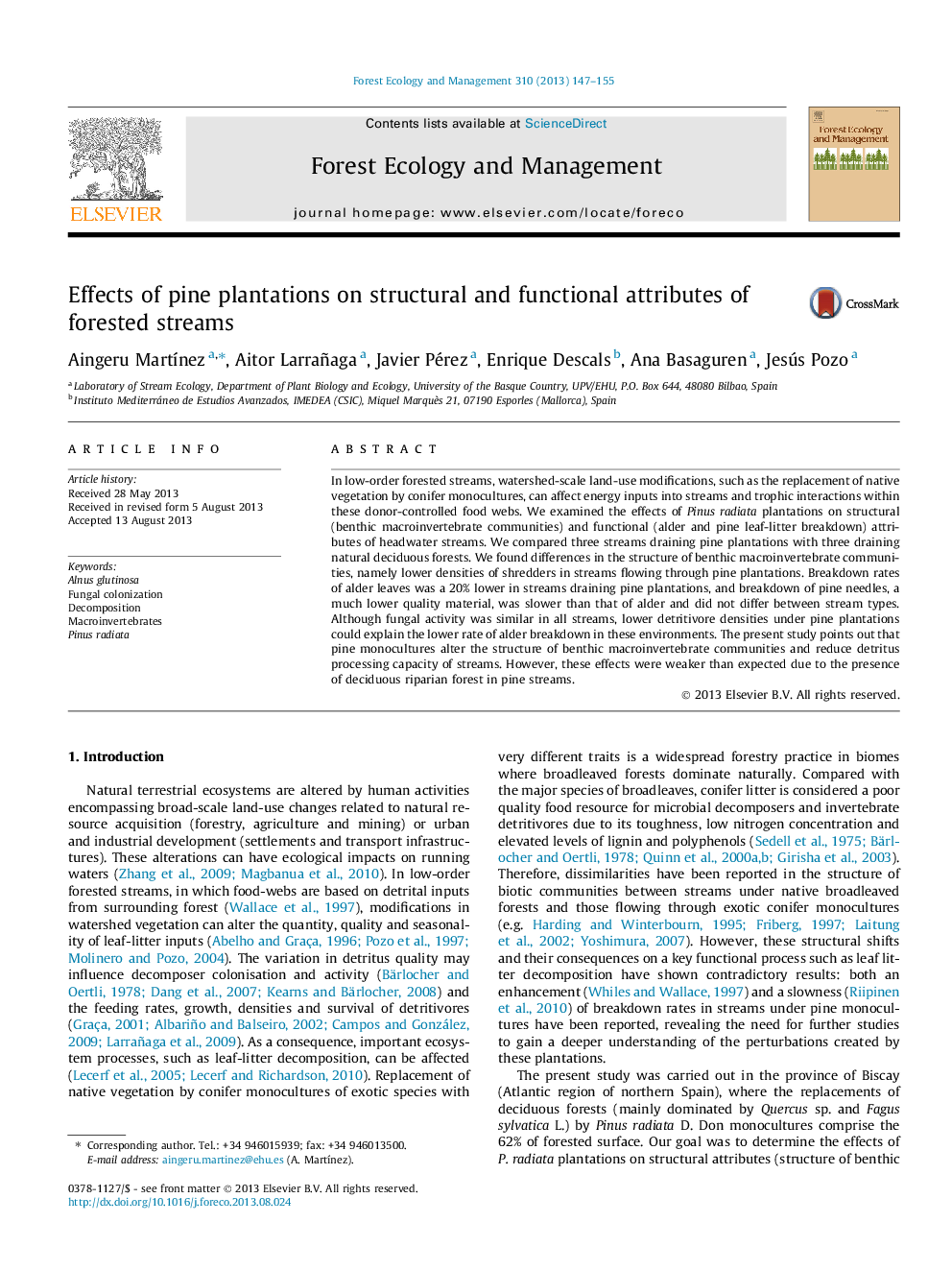| Article ID | Journal | Published Year | Pages | File Type |
|---|---|---|---|---|
| 6543657 | Forest Ecology and Management | 2013 | 9 Pages |
Abstract
In low-order forested streams, watershed-scale land-use modifications, such as the replacement of native vegetation by conifer monocultures, can affect energy inputs into streams and trophic interactions within these donor-controlled food webs. We examined the effects of Pinus radiata plantations on structural (benthic macroinvertebrate communities) and functional (alder and pine leaf-litter breakdown) attributes of headwater streams. We compared three streams draining pine plantations with three draining natural deciduous forests. We found differences in the structure of benthic macroinvertebrate communities, namely lower densities of shredders in streams flowing through pine plantations. Breakdown rates of alder leaves was a 20% lower in streams draining pine plantations, and breakdown of pine needles, a much lower quality material, was slower than that of alder and did not differ between stream types. Although fungal activity was similar in all streams, lower detritivore densities under pine plantations could explain the lower rate of alder breakdown in these environments. The present study points out that pine monocultures alter the structure of benthic macroinvertebrate communities and reduce detritus processing capacity of streams. However, these effects were weaker than expected due to the presence of deciduous riparian forest in pine streams.
Related Topics
Life Sciences
Agricultural and Biological Sciences
Ecology, Evolution, Behavior and Systematics
Authors
Aingeru MartÃnez, Aitor Larrañaga, Javier Pérez, Enrique Descals, Ana Basaguren, Jesús Pozo,
